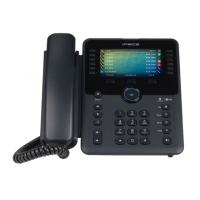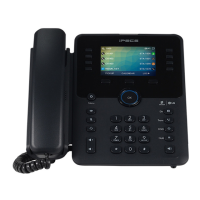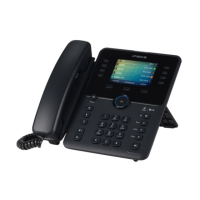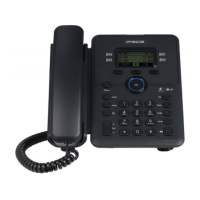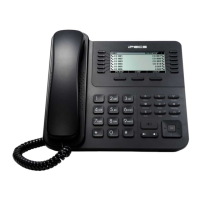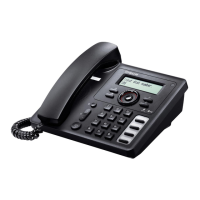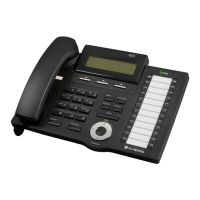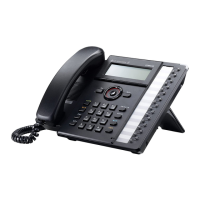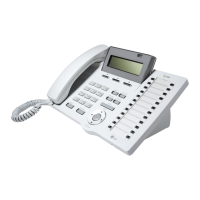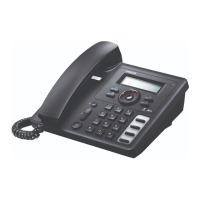Do you have a question about the LG-Ericsson iPecs 1010i and is the answer not in the manual?
Describes the physical layout and key functions of the iPECS 1000i series phones.
Alerts users to potential dangers and precautions to prevent injury or damage.
Explains how to interpret the LCD display, icons, and screen layouts for different phone models.
Details how to activate, use, and control the speakerphone functions, including mute and volume.
Describes the procedures for answering incoming calls when the phone is not in use.
Explains how to handle incoming calls when already engaged in another call.
Details how to use the Answering Machine Emulation (AME) feature for call screening.
Details how to activate DND to block incoming calls and manage call routing.
Explains how to activate and deactivate call forwarding to different destinations.
Details how to place calls to other stations within the system using the Intercom.
Explains how to use Camp-On, Callback, or Voice Over for busy stations.
Details how to place external calls using outside lines and dial codes.
Explains how to use the Directory button to search for contacts across various directories.
Details how to place calls by searching names in different directories.
Details how to transfer active calls to other stations or system resources.
Explains how to place active calls on hold, either system or exclusive hold.
Explains how to establish and manage multi-party conference calls.
Details how to retrieve voice mail messages locally and from a remote location.
Explains how to exchange short text messages with other iPECS display phone users.
Details how to place and receive calls on a mobile phone as an extension of the iPECS system.
Allows configuration of various phone settings like name, rings, passwords, and languages.
Details how to configure the phone's network connection settings.
Explains how to assign features and labels to the flexible buttons on the phone.
Introduces the web-based tool for configuring IP phone parameters remotely.
Describes the physical layout and key functions of the iPECS 1000i series phones.
Alerts users to potential dangers and precautions to prevent injury or damage.
Explains how to interpret the LCD display, icons, and screen layouts for different phone models.
Details how to activate, use, and control the speakerphone functions, including mute and volume.
Describes the procedures for answering incoming calls when the phone is not in use.
Explains how to handle incoming calls when already engaged in another call.
Details how to use the Answering Machine Emulation (AME) feature for call screening.
Details how to activate DND to block incoming calls and manage call routing.
Explains how to activate and deactivate call forwarding to different destinations.
Details how to place calls to other stations within the system using the Intercom.
Explains how to use Camp-On, Callback, or Voice Over for busy stations.
Details how to place external calls using outside lines and dial codes.
Explains how to use the Directory button to search for contacts across various directories.
Details how to place calls by searching names in different directories.
Details how to transfer active calls to other stations or system resources.
Explains how to place active calls on hold, either system or exclusive hold.
Explains how to establish and manage multi-party conference calls.
Details how to retrieve voice mail messages locally and from a remote location.
Explains how to exchange short text messages with other iPECS display phone users.
Details how to place and receive calls on a mobile phone as an extension of the iPECS system.
Allows configuration of various phone settings like name, rings, passwords, and languages.
Details how to configure the phone's network connection settings.
Explains how to assign features and labels to the flexible buttons on the phone.
Introduces the web-based tool for configuring IP phone parameters remotely.
| Ethernet Ports | 2 |
|---|---|
| Supported Protocols | SIP |
| Operating Temperature | 0°C to 40°C |
| Network Interface | 10/100Base-T Ethernet |
| Codecs | G.711, G.729 |
| Power Supply | AC Adapter (Optional) |
| Power over Ethernet | IEEE 802.3af compliant |
| Speakerphone | Full Duplex |
| Headset Jack | RJ-9 |
| Humidity | 10% to 90%, non-condensing |
